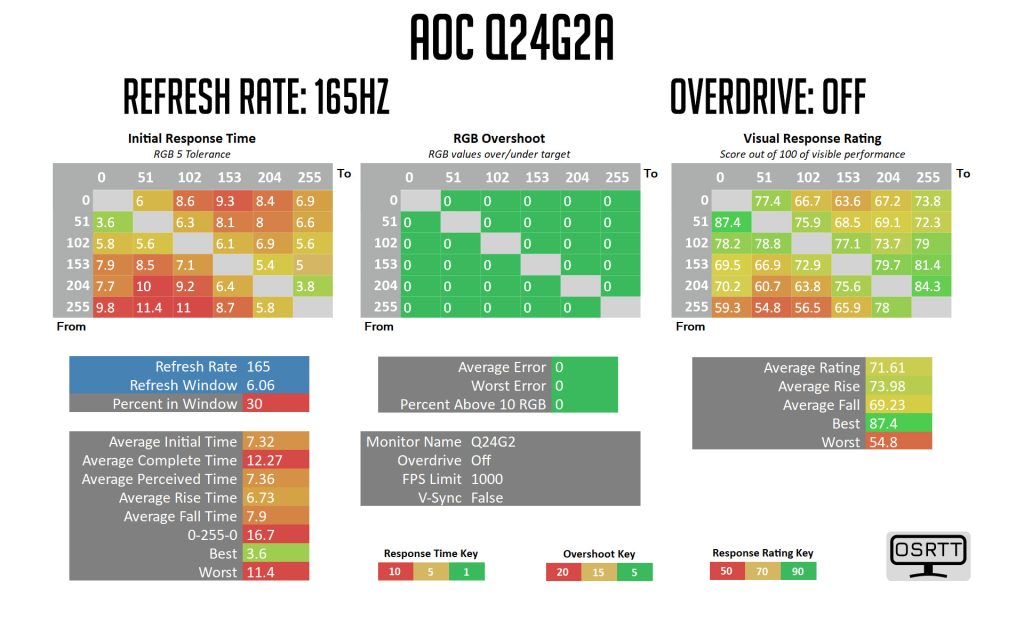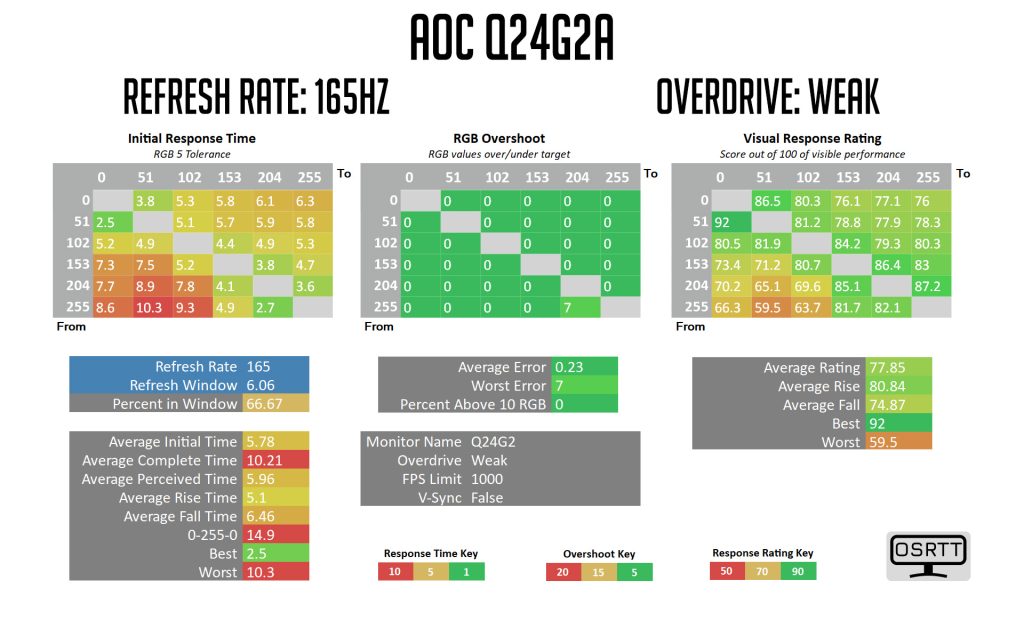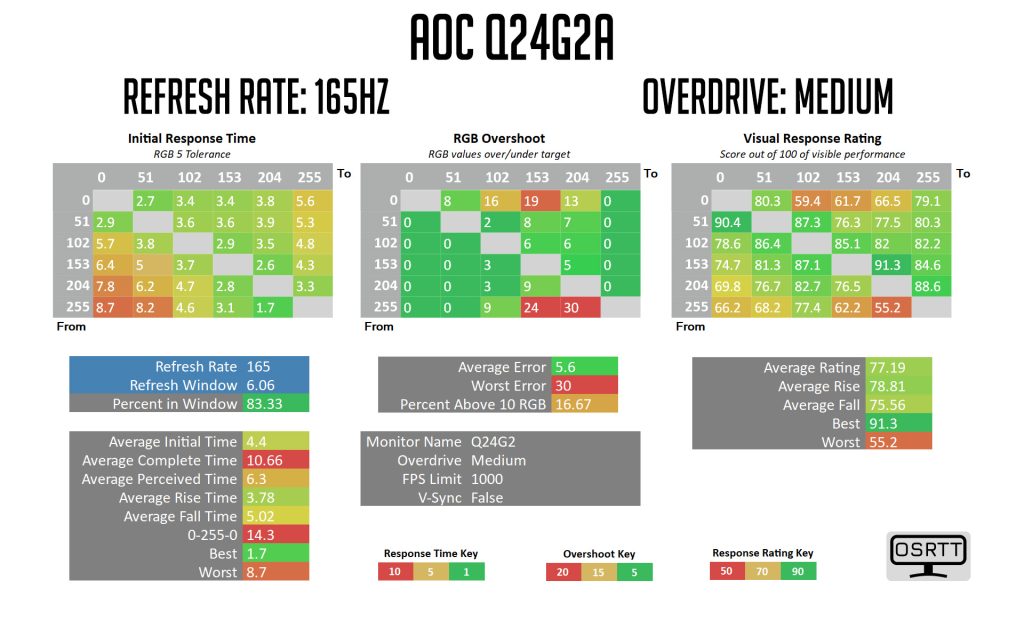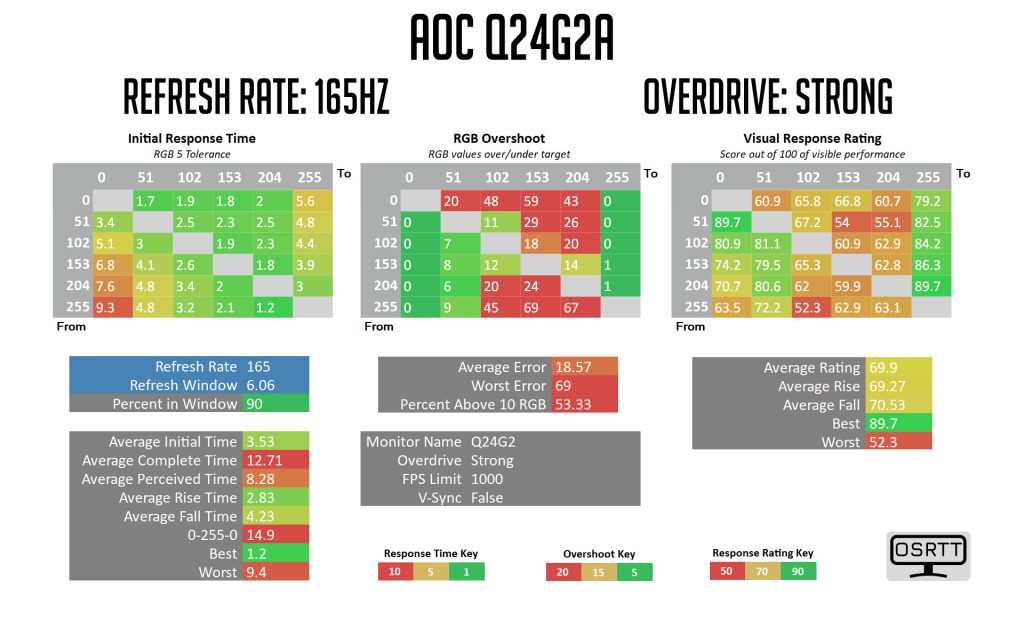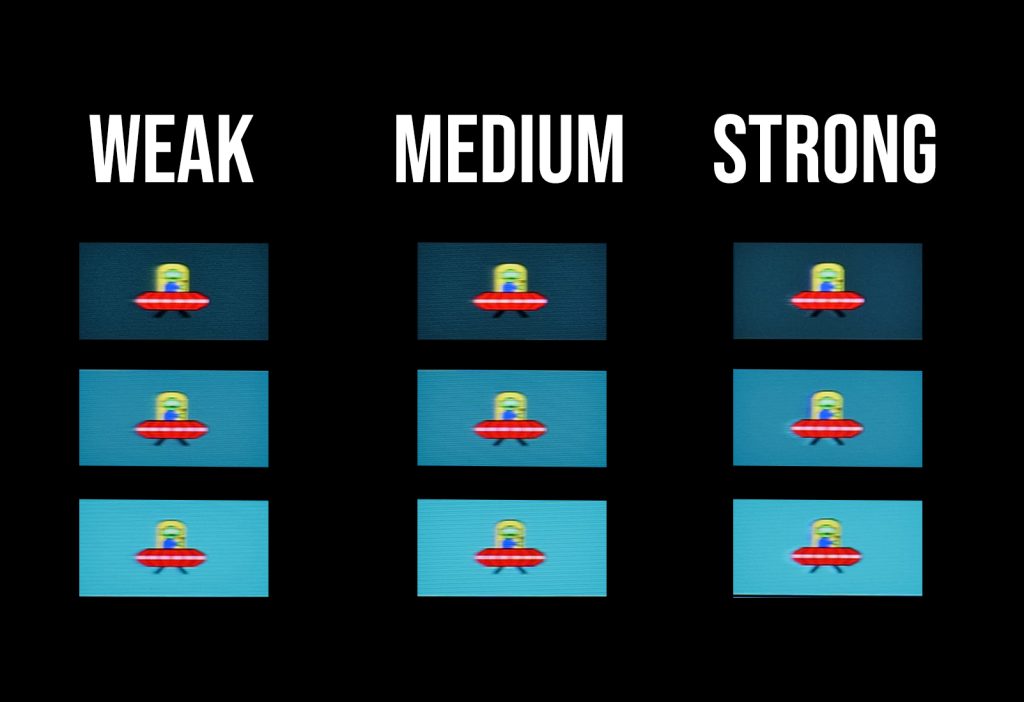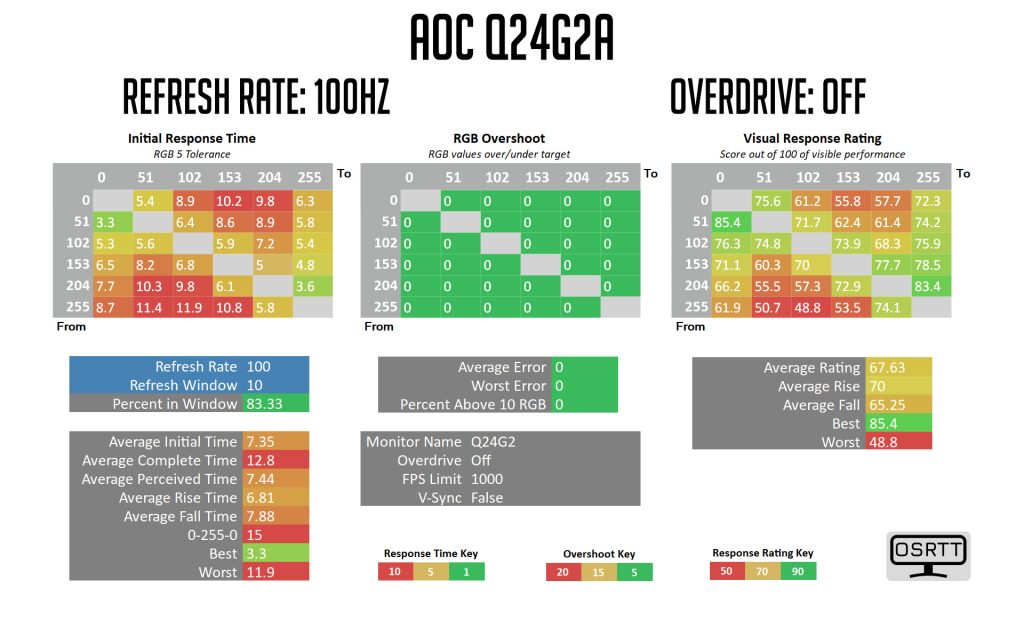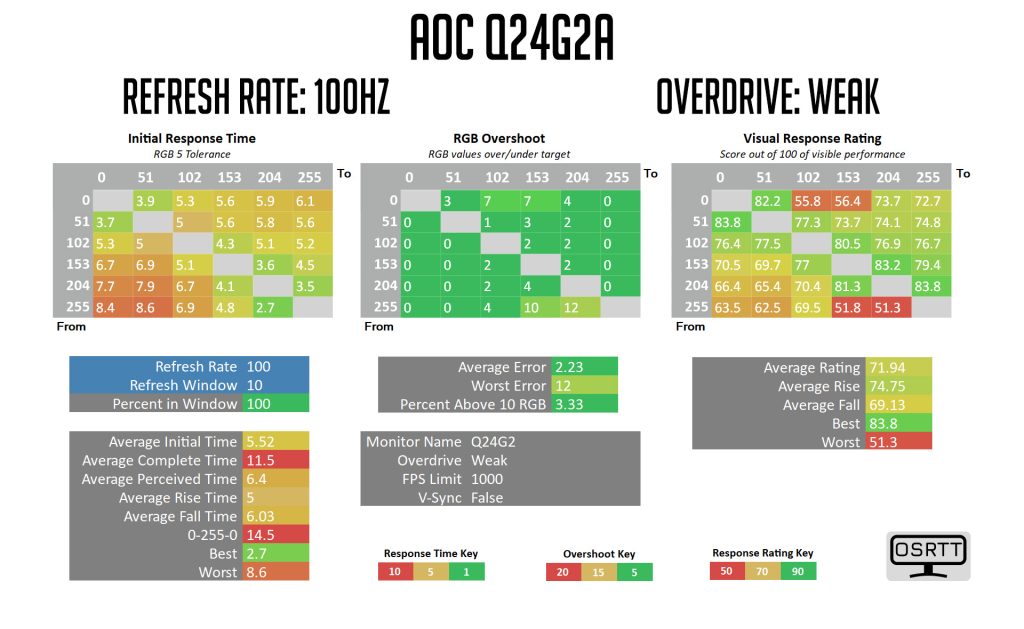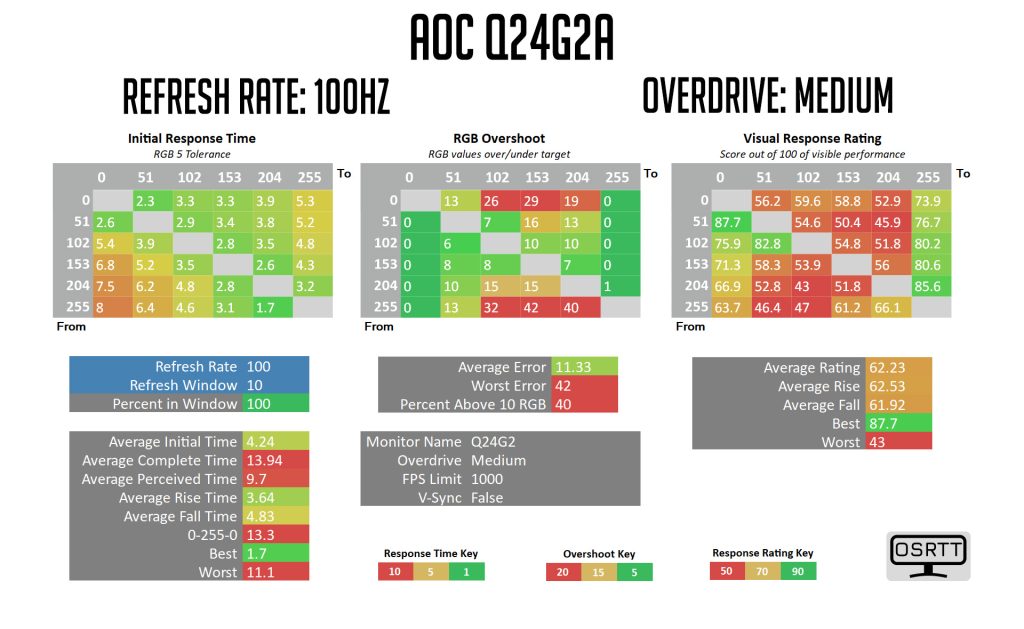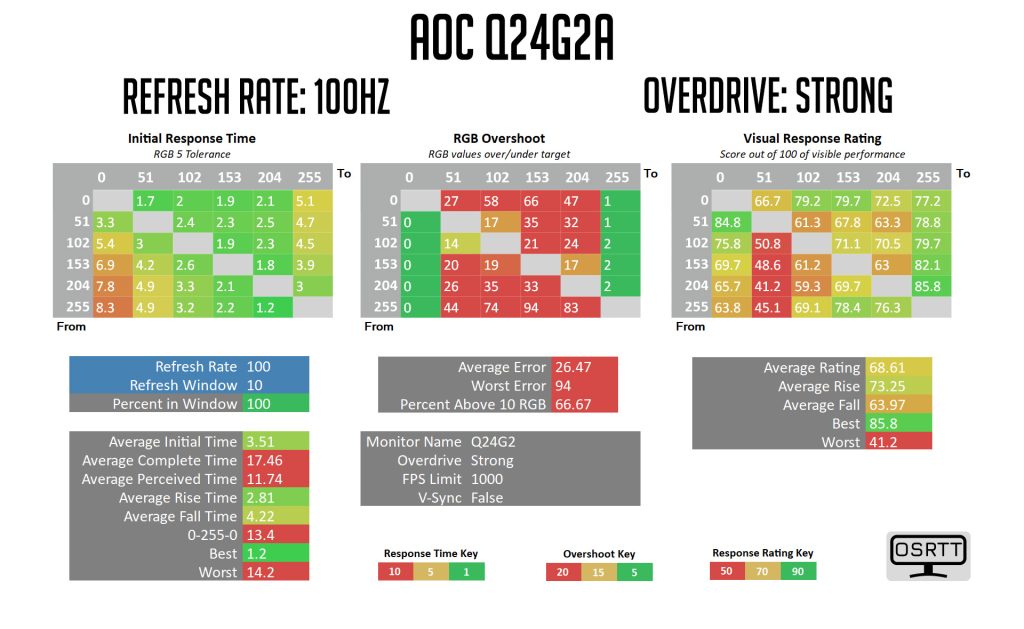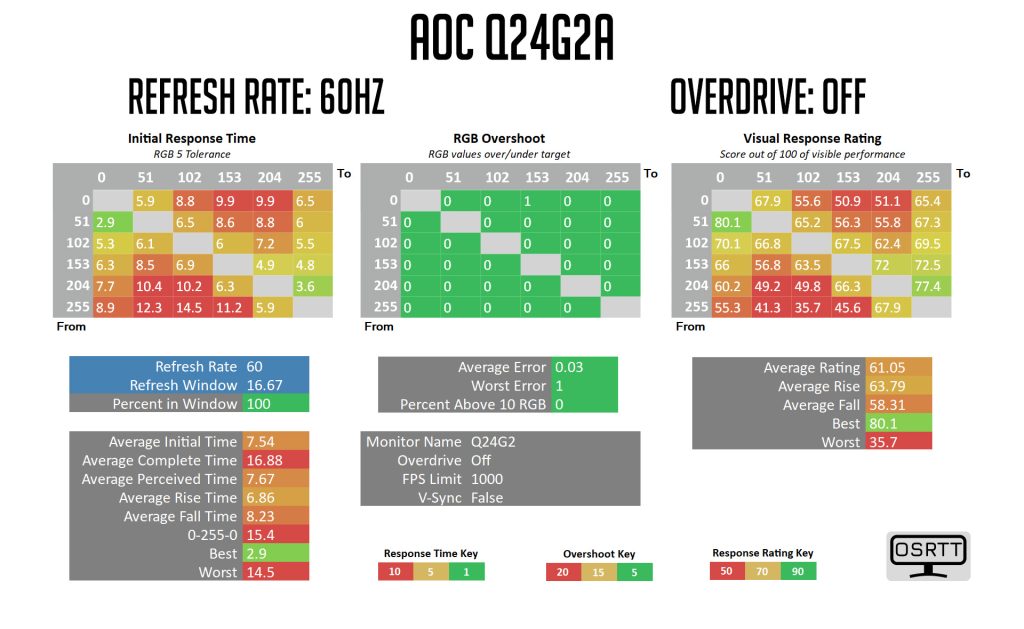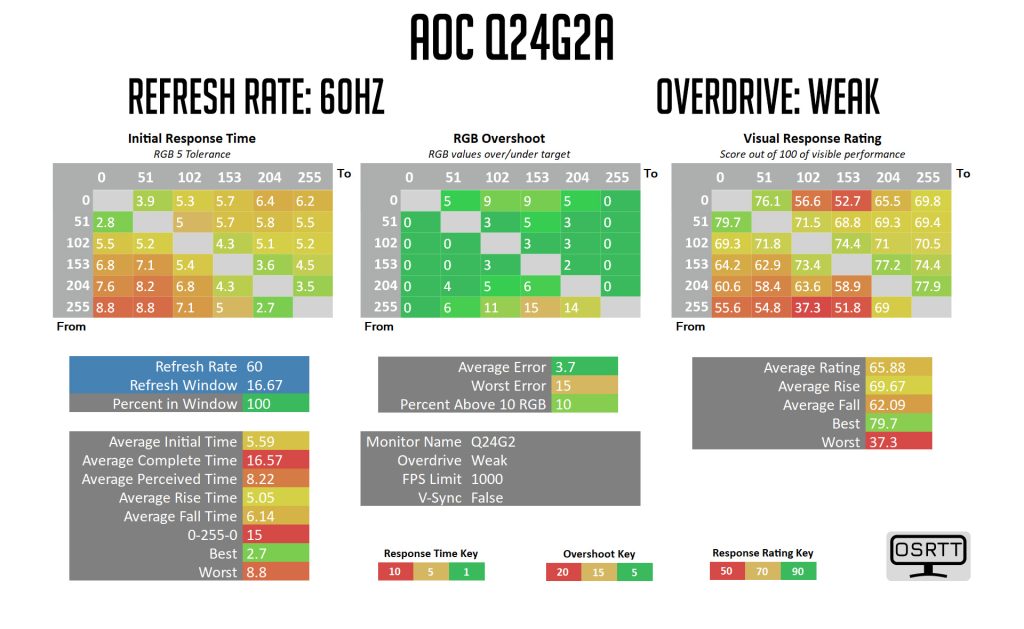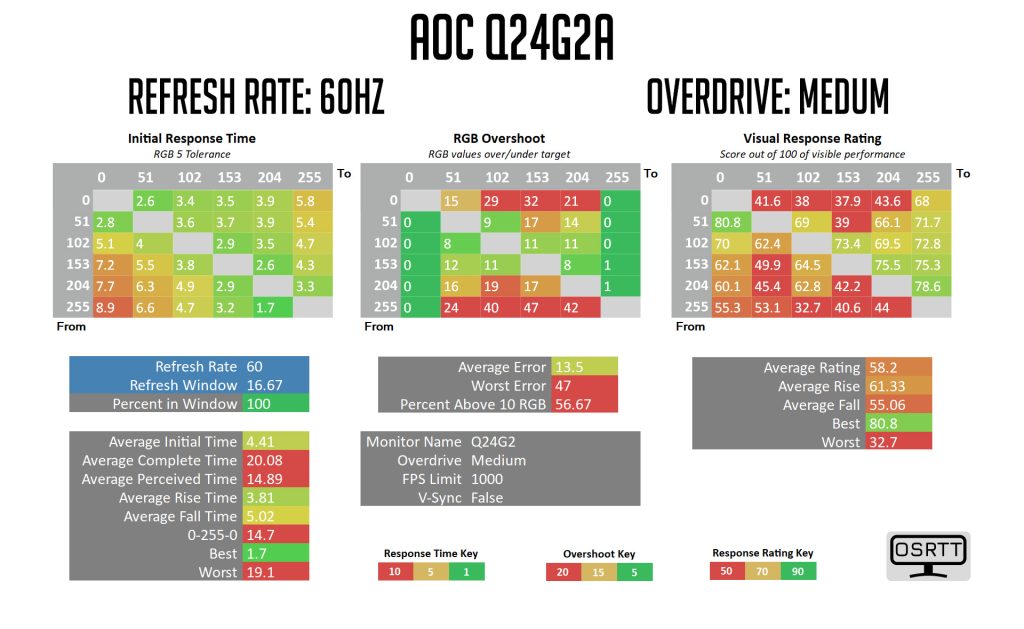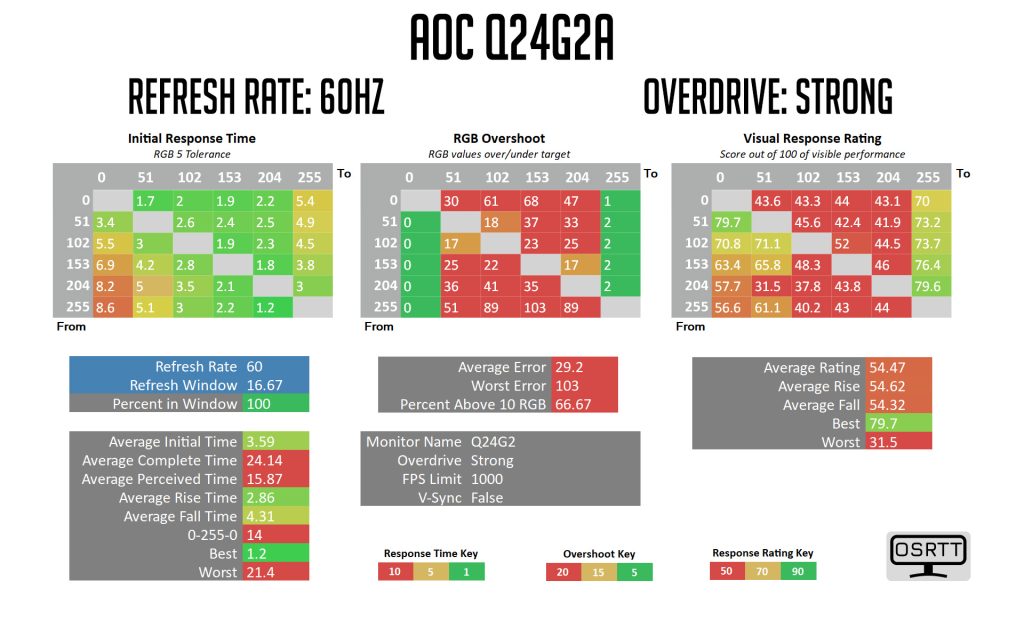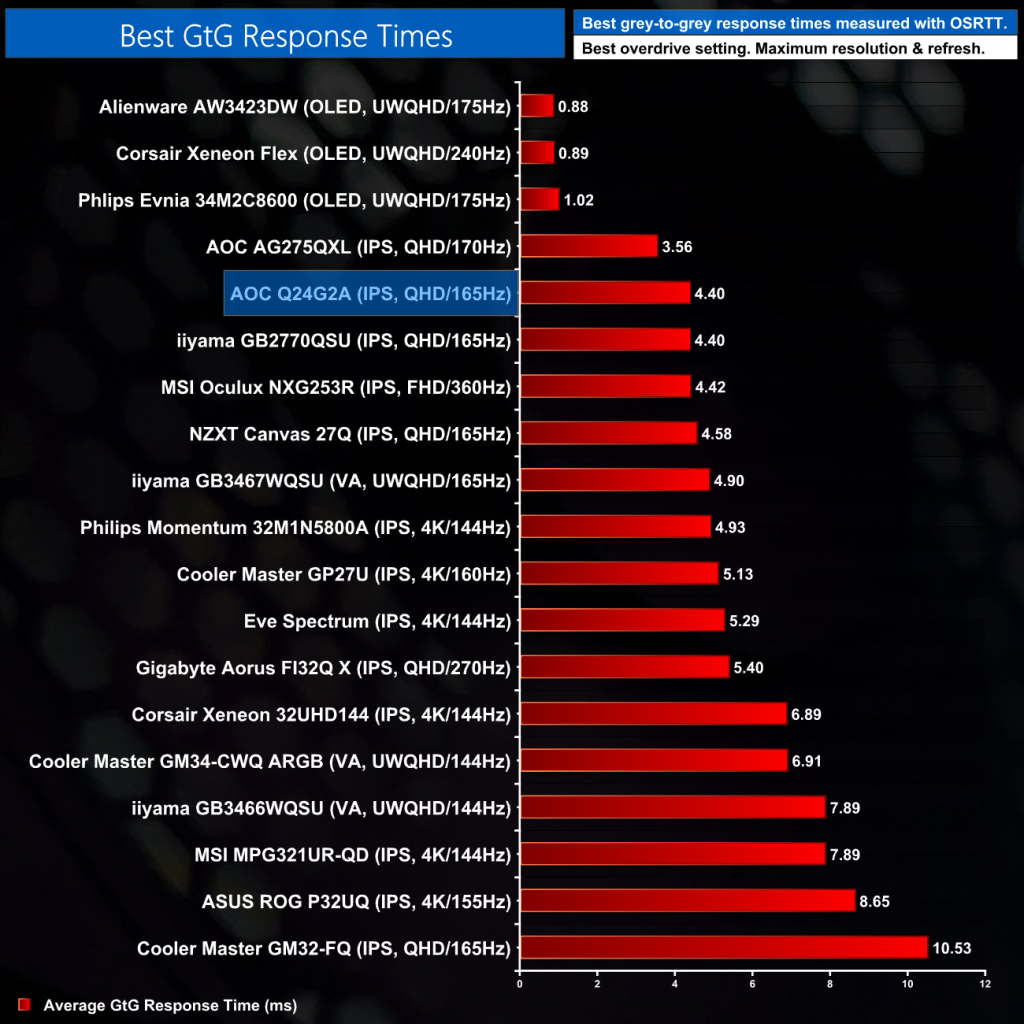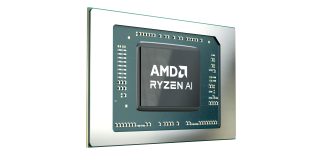Monitor response time testing is a new addition to our reviews, where we use the Open Source Response Time Tool (OSRTT), developed by TechTeamGB. This measures grey-to-grey response times and presents the results in a series of heatmaps, the style of which you may be familiar with from other reviews.
Initial Response Time is the time taken for the panel to transition from one colour to another, where lower values are better. We present the initial response time, so overshoot is not taken into account and is measured separately. We use a fixed RGB 5 tolerance for each transition.
Overshoot is the term given for when a monitor's transition exceeds or goes beyond its target value. So if a monitor was meant to transition from RGB 0 to RGB 55, but it hits RGB 60 before settling back down at RGB 55, that is overshoot. This is presented as RGB values in the heatmaps – i.e. how many RGB values past the intended target were measured.
Visual Response Rating is a metric designed to ‘score' a panel's visual performance, incorporating both response times and overdrive. Fast response times with little to no overshoot will score well, while slow response times or those with significant overshoot will score poorly.
We test the Q24G2A at 165Hz, 100Hz and 60Hz, using all four of the overdrive settings found within the OSD.
165Hz
Starting with overdrive turned off at 165Hz, the Q24G2A manages an average response time of 7.32ms. That's obviously not how anyone is going use the screen, but it's still a decent result for something with no overdrive, indicating a good quality panel has been used.
With overdrive now set to Weak, we can cut down the response times further, with a new average of 5.78ms. This is noticeably faster and only one transition shows a tiny amount of overshoot. That said, we're only looking at 67% of transitions taking place within the 6.06ms refresh rate window for 165Hz, so it's not quite ideal yet.
The Medium overdrive mode is my preferred option for 165Hz gaming. Now it does introduce some overshoot, with a handful of transitions exceeding their target by 10 RGB values or more. However, that's still not very noticeable to the eye, and it reduces the average response time to 4.4ms. Now, 83% of transitions are within the 6.06ms window. It seems the fall times from RGB 255 (as seen in the furthest left column) are the slowest transitions for this panel.
Lastly, we have the Strong overdrive mode. This delivers the fastest average response time, hitting 3.53ms, but it comes with a significant amount of overshoot, to the point where I wouldn't say it was a realistic option for gaming. Over half the transitions missed their targets by 10 RGB values or more, so that's not a great look – literally.
Just to put those results into perspective, above you can see our pursuit camera images, using the Blur Busters UFO test, showcasing the three overdrive settings at 165Hz.
100Hz
A downside for the Q24G2A is its lack of a single overdrive mode. While I found the medium setting works best at 165Hz, at 100Hz it introduces too much overshoot, with 40% of transitions exceeding their targets by 10 or more RGB values. Instead, the weak overdrive mode works best at this refresh rate, with its 5.52ms average response time and 100% of transitions coming in within the 10ms refresh window for 100Hz.
60Hz
Likewise, the weak mode works best at 60Hz. There is only a small amount of overshoot, but it strikes the best balance. Medium is not usable at 60Hz.
Overall then, we can see the Q24G2A towards the top of our chart, with its best result of 4.4ms grey-to-grey. For £220, the response times are pretty impressive it has to be said.
 KitGuru KitGuru.net – Tech News | Hardware News | Hardware Reviews | IOS | Mobile | Gaming | Graphics Cards
KitGuru KitGuru.net – Tech News | Hardware News | Hardware Reviews | IOS | Mobile | Gaming | Graphics Cards


